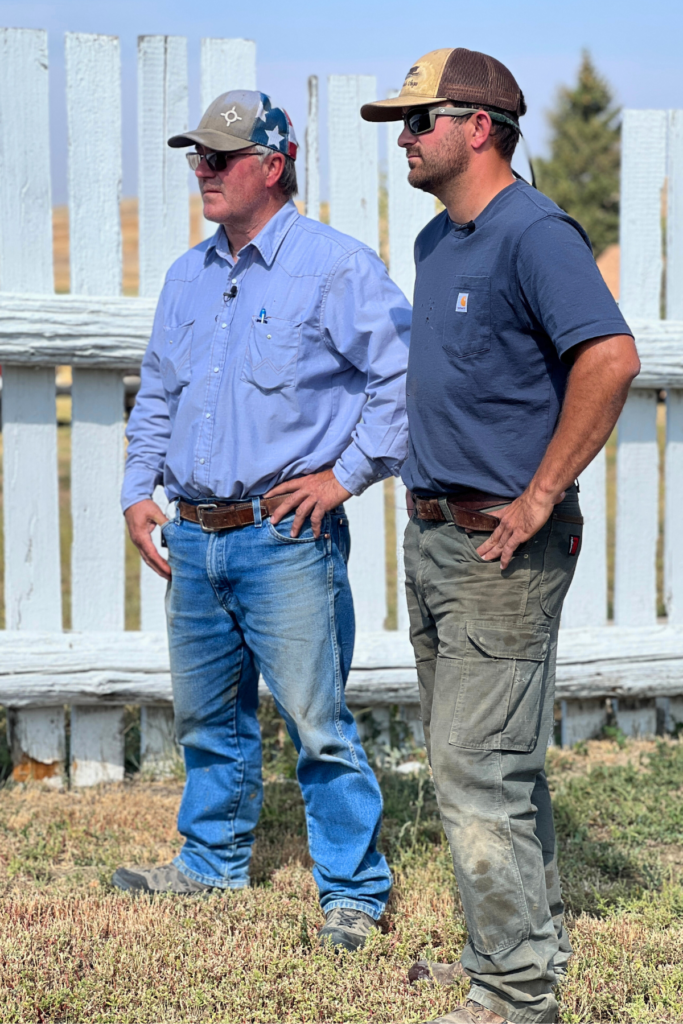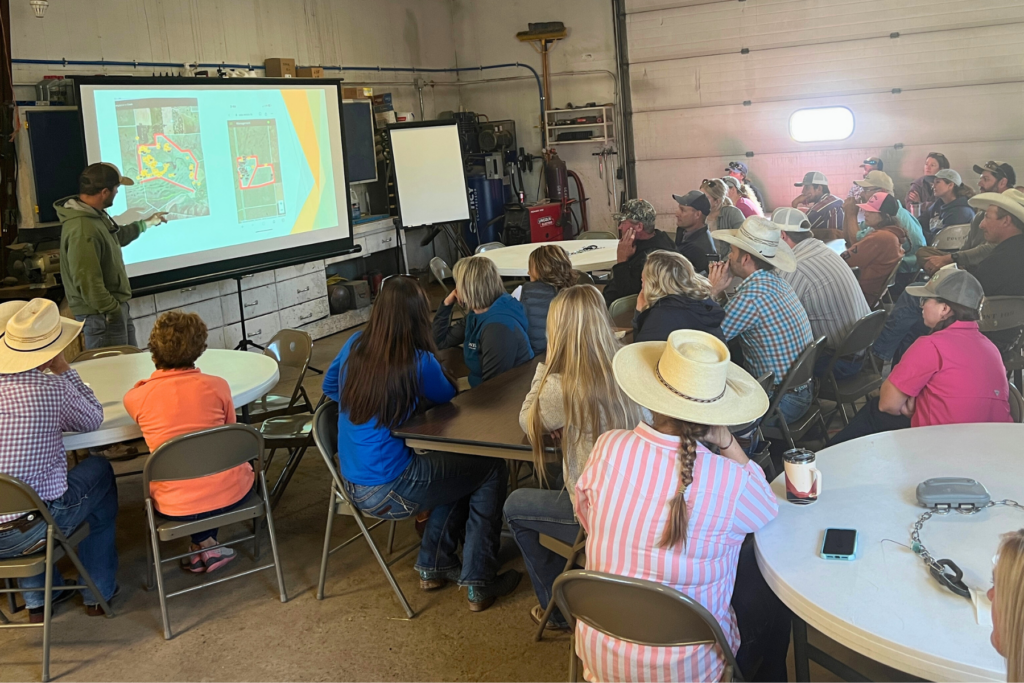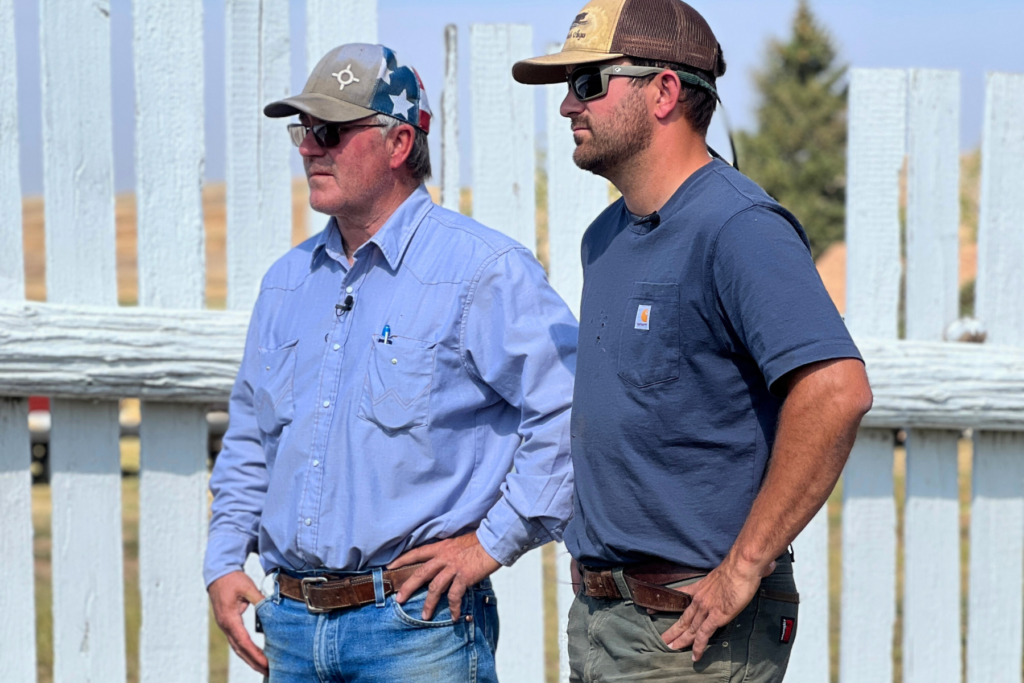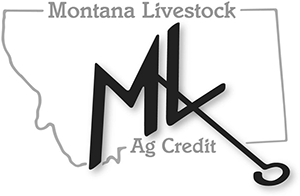Beneath wispy clouds set in a blindingly blue sky where Montana and Saskatchewan become indistinguishable from one another sits the Louie Petrie Ranch, an exemplary model in ranch tradition, innovative trial, and targeted implementation. It’s on this land outside of Turner where you’ll find multiple generations strategizing for the long-term viability of the ranch originally homesteaded in 1901.

“If you improve the resource, you’re improving your bottom line,” says Tyrel Obrecht, a fifth-generation member. “At the end of the day, these have to be viable businesses to bring families home.”
Obrecht followed the path of his father, Sam, to Montana State University, where he graduated in 2013 with a degree in agricultural economics. After spending some time in the finance industry, he came back to the family ranch with a money mindset. The numbers matter. Any approach towards the adoption of new practices at the Louie Petrie Ranch is vigorously vetted before implementation. What will it cost? What will it save?

Other strategic practices implemented by the ranch have included calving later to be more in tune with Mother Nature and converting farmland to grass, allowing for more grazing flexibility in the spring and fall. Seeing opportunity in carbon markets, they quickly began their research. Research turned to action, and the ranch is now monitoring their carbon and getting paid for conservation practices beneficial to its sequestration. In a region highly susceptible to drought, a keen focus has been placed on water improvements, further developing springs and reservoirs, inputting water tanks and pipeline, and implementing solar panels for water utilization assistance in remote areas. Along with adding resilience for the ranch, it has improved water availability for wildlife along a key migration corridor.
Realizing power in collaboration, the ranch has partnered with Ranchers Stewardship Alliance, World Wildlife Fund, Western Sustainability Exchange, Pheasants Forever, Montana Fish, Wildlife and Parks, Natural Resources Conservation Service, and U.S. Fish and Wildlife Service to bolster ranch projects. These relationships bring tremendous resources, both in financial contributions able to magnify the ranch’s investments and scholarly investigation. With a holistic approach at the forefront, all parties actively seek solutions workable for the land, livestock, and wildlife.
As Obrecht stands beside his father discussing ranch logistics, it’s hard to miss the sparkle in his eye when the conversation turns to his children. The twinkle is matched by that of his daughter as she, the ranch’s sixth generation, poses before a crisp spring rainbow, not knowing yet the blessing of the moisture behind it.
“Most of our considerations are long-term,” Obrecht says. “Agriculture’s a long game, so I think if you’re making business decisions on a year-to-year basis, you’re going to miss out on long-term opportunity.”
This unique blend of respect for the past and innovation for the future has allowed the ranch to thrive through the decades. As the ranch continues to evolve, it remains a shining example of how preserving heritage can coexist with progressive advancements and collaborative conservation, ensuring its legacy will stay intact for generations.




